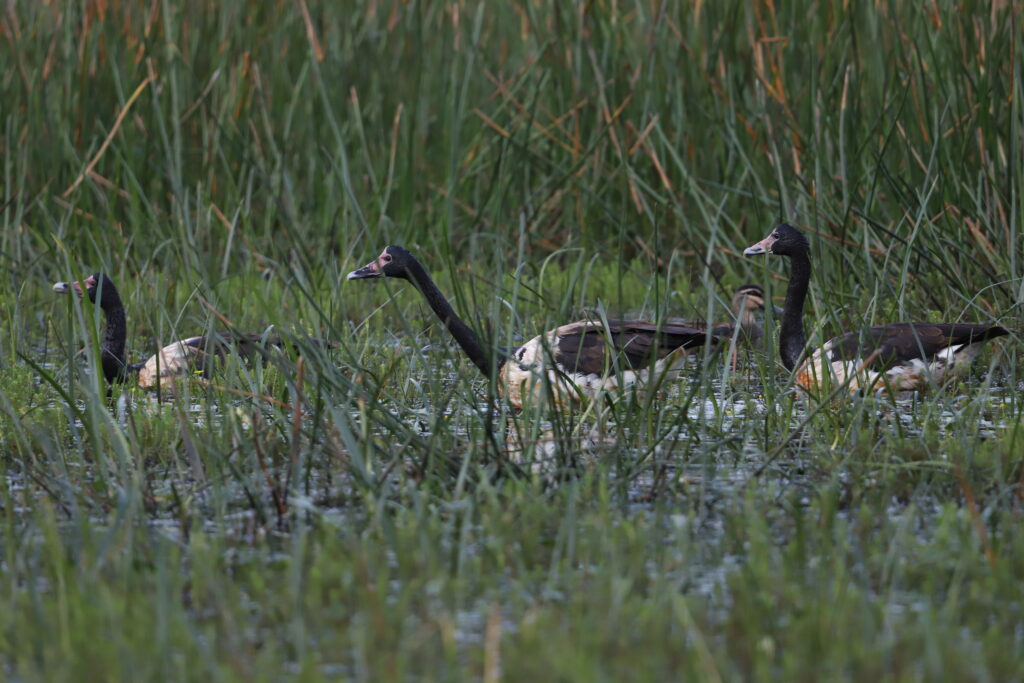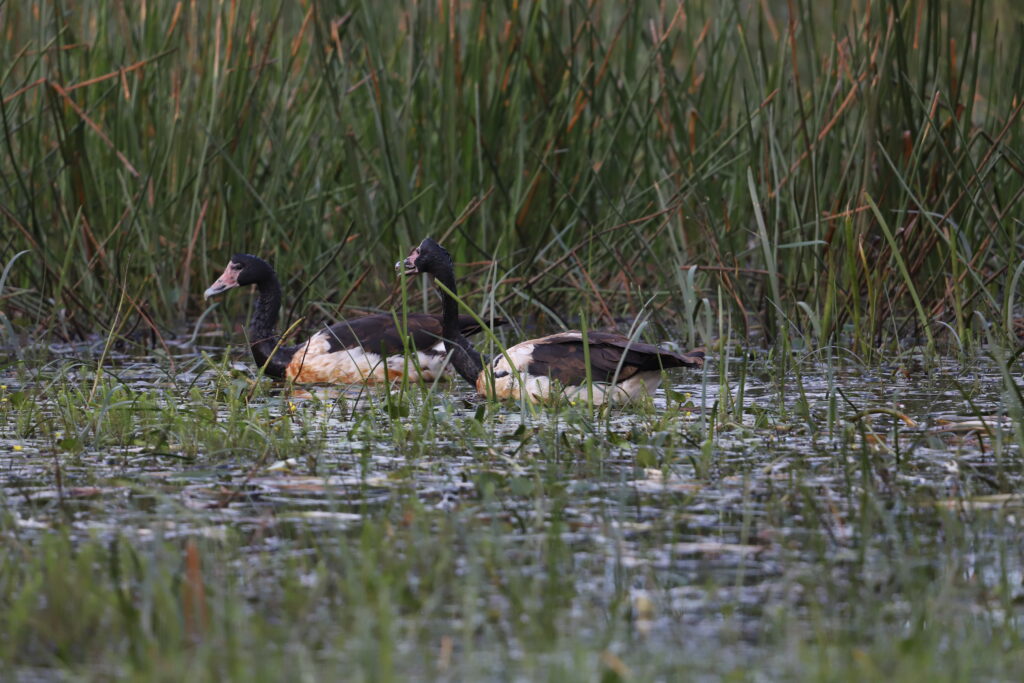Rare magpie geese visit Gippsland Lakes
Two rare sightings of Magpie Geese have been confirmed on across the Gippsland Lakes catchment in both Maffra and Bairnsdale.
“We are excited about these sightings of Magpie Geese visiting Gippsland,” said Sean Phillipson, Senior NRM Advisor for East Gippsland Catchment Management Authority.
The birds are found on floodplains and in freshwater wetland areas across coastal northern and eastern Australia but are a rare visitor to Victoria where their conservation status is listed as Vulnerable.
Passionate field naturalist Duncan Fraser, a resident in the Maffra-Newry area since 1945, spotted three birds near Newry Creek. A member of the public reported a further three Magpie Geese in Bairnsdale with East Gippsland CMA confirming both sightings and also that they were two separate groups of geese.
“Magpie geese were once widespread across freshwater wetlands of Gippsland and Victoria but historic over-hunting, draining of wetlands and intensification of agriculture changed this,” said Mr Phillipson.
“The birds in Bairnsdale looked to be sub-adults and could be using the area as a stopover refuge. Magpie Geese often form breeding groups of three – two females and one male.”
Magpie Geese need freshwater wetlands and aquatic vegetation to survive.
“These sightings demonstrate that wetlands and vegetation around the Lakes are acting as a refuge and that the right habitat can be an important place for our wildlife – no matter how small.”
“These rare visitors are something we can all celebrate and are a result of the combined effort to enhance and protect the health of the wetlands around the Lakes,” concluded Mr Phillipson.
You can help
- Magpie Geese are large black and white birds with a red beak. If you see any Magpie Geese, we would love you to log the sighting with BirdData either online or via the app.
Home to the smallest of fish through to the largest of birds, Gippsland Lakes on Gunaikurnai Country covers 60,000 hectares and are home to around 400 indigenous plants, 300 native wildlife species and are recognised as a feeding ground for migratory birds that travel from as far away as Siberia. That is why they are one of 67 wetlands in Australia listed under the Convention on Wetlands of International Importance (Ramsar Convention).





